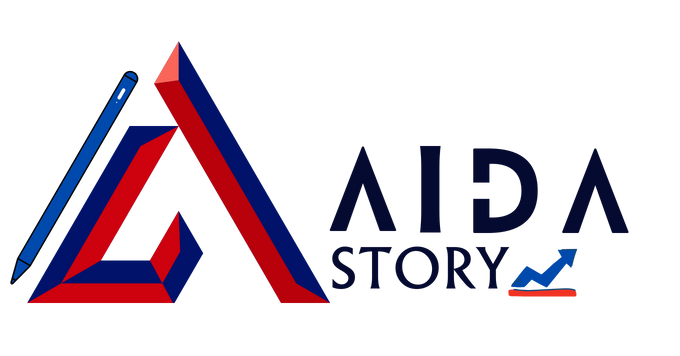
We’re all glued to social media these days, and for business owners, it can be a double-edged sword. While it’s a fantastic tool for connecting with customers, the constant stream of updates and entertaining content can be a major distraction. The key to saving time is creating boundaries.
Treat business social media as a separate entity. Set specific times to check in, respond to messages, and post content. During those focused periods, avoid the allure of funny cat videos or endless scrolling. The infographic from Vertical Response below reveals that merely finding stuff to post takes the most amount of time.
Looking for complete digital marketing solutions including social media? Head on to the AIDA Story. Learn more about us today!
Image source : Vertical Response
Alt text : Time spent on different activities on social media
Another time-saving weapon? Social media management tools. These platforms let you schedule posts in advance, track analytics, and even engage with followers – all from a central hub. This frees up your valuable time to focus on what truly matters: running your business.
1. Social Media Scheduling Tools:
- Function: Plan and publish content across platforms in advance.
- Pros: Saves time, maintains consistency, allows team collaboration.
- Cons: Limited flexibility for real-time engagement.
- Examples:
- Buffer (https://buffer.com/) – User-friendly interface, ideal for beginners.
- Hootsuite (https://www.hootsuite.com/) – Robust platform for managing multiple accounts.
- Sprout Social (https://sproutsocial.com/) – Excellent reporting and analytics features.
2. Social Media Analytics Tools:
- Function: Track and analyze the performance of your social media efforts.
- Pros: Provides insights into audience demographics, engagement metrics, content effectiveness.
- Cons: Can be overwhelming for beginners to interpret data.
- Examples:
- Facebook Insights (https://www.facebook.com/help/268680253165747) – Built-in tool for Facebook page analytics.
- Twitter Analytics (https://analytics.twitter.com/) – Tracks key metrics for your Twitter profile.
- Google Analytics (https://marketingplatform.google.com/about/) – Powerful tool for analyzing website traffic driven by social media.
3. Social Media Monitoring Tools:
- Function: Track online conversations about your brand, industry, or competitors.
- Pros: Identifies brand sentiment, helps manage crises, discovers potential customers.
- Cons: Requires ongoing monitoring and analysis, may generate irrelevant information.
- Examples:
- Brand24 (https://brand24.com/) – Tracks brand mentions across various platforms.
- Sprout Social (https://sproutsocial.com/) – Offers social listening capabilities alongside scheduling.
- Mention (https://mention.com/en/) – Monitors brand mentions and social media conversations.
4. Social Media Listening Tools:
- What they do: Track online conversations about your brand, industry, or competitors. They monitor brand mentions, keywords, hashtags, and sentiment analysis.
- Pros: Identify brand sentiment, discover industry trends, find brand advocates, and gain insights to inform your strategy.
- Cons: Can be overwhelming with data, may require additional filtering for specific needs.
- Example: Brandwatch (https://www.brandwatch.com/) offers comprehensive listening with advanced analytics and reporting.
5. Social Media Reporting Tools:
- What they do: Track and analyze the performance of your social media campaigns. They provide data on reach, engagement, follower growth, and website traffic.
- Pros: Measure campaign effectiveness, identify top-performing content, understand audience demographics, and optimize your strategy.
- Cons: Can be data-heavy and require interpretation, may not offer in-depth insights for specific goals.
- Example: Sprout Social (https://sproutsocial.com/social-media-management/) offers detailed reporting with social listening capabilities.
6. Social Media Automation Tools:
- What they do: Schedule posts, respond to comments and messages, and manage social media workflows in advance.
- Pros: Save time and maintain consistent posting, automate repetitive tasks, manage multiple accounts efficiently.
- Cons: Limited ability to respond to real-time situations, may feel impersonal, requires strategic planning for effective automation.
- Example: Hootsuite (https://www.hootsuite.com/) is a popular platform for scheduling posts, managing multiple accounts, and engaging with audiences.
7. Social Media Engagement Tools:
- Tool: Buzzsumo (https://buzzsumo.com/)
- Pros: Discovers trending topics and high-performing content for inspiration. Helps identify influencers to collaborate with. Analyzes what type of content resonates with your target audience.
- Cons: Free plan has limited features. Paid plans can be expensive for smaller businesses. Relies on user-generated data, which may not always be accurate.
8. Social Media Customer Service Tools:
- Tool: Sprout Social (https://sproutsocial.com/social-media-management/)
- Pros: Offers a unified inbox to manage customer inquiries across multiple social media platforms. Enables faster response times and improved customer satisfaction. Provides reporting tools to track customer service performance.
- Cons: Can be complex to set up for larger teams. Pricing can be high for enterprise-level plans. May require additional training for customer service representatives.
9. Social Media Chatbots:
- Tool: ManyChat (https://manychat.com/)
- Pros: Provides 24/7 customer support by automating frequently asked questions. Can be used to qualify leads and collect customer information. Offers a more personalized experience by tailoring responses based on user input.
- Cons: Setting up complex chat flows can be time-consuming. May not be able to handle all customer inquiries effectively. Relies on clear user input for accurate responses.
Here’s a simple table to highlight the time saved by using social media tools:
In conclusion, these social media marketing tools can be a game-changer for busy marketers. A study by Buffer found that social media managers spend an average of 6 hours per week just scheduling and publishing content . By utilizing social media engagement tools to identify trending topics and content, customer service tools to streamline communication, and chatbots for automated responses, you can free up valuable time to focus on strategic initiatives and building relationships with your audience. These tools empower you to work smarter, not harder, and ultimately achieve greater success in the ever-evolving social media landscape.
Want to reach the full potential of your online presence?
Invest in exceptional content, amplified reach, and a brand that resonates like never before. Contact AIDA Story today to craft a thriving online identity for your brand. Let’s cultivate growth, together.



